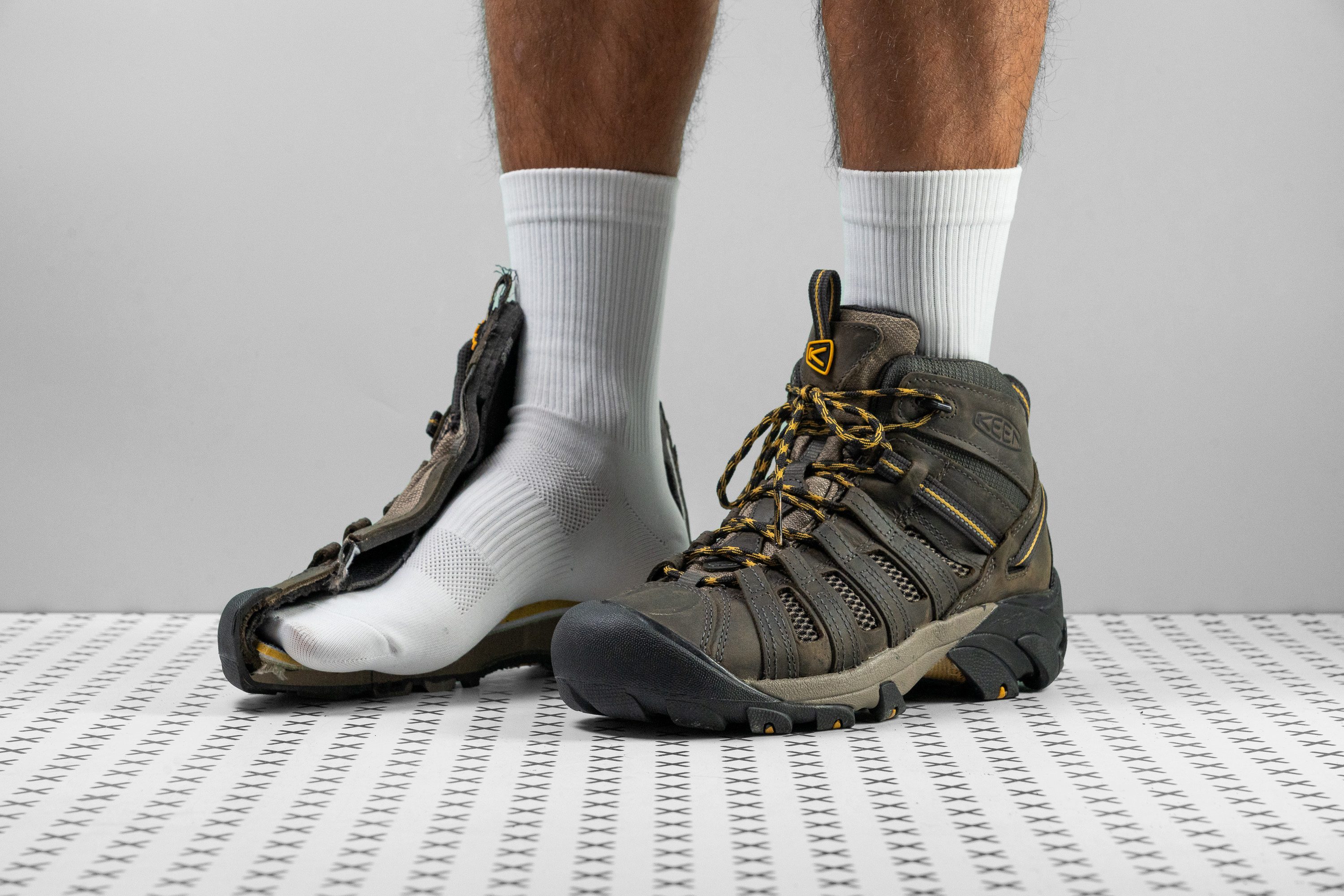Our verdict
- Top pick in best cheap hiking boots
- Top pick in best hiking boots for wide feet
Pros
- Accommodating fit
- No need to break in
- Excellent traction
- Lightweight
- Sufficient ankle support
- Laudable breathability
- Quick drying
- Versatile
Cons
- Sole started peeling off
- Questionable construction quality
- Too wide for narrow feet
Audience verdict
Comparison
The most similar hiking boots compared
+ + Add a shoe | |||||
|---|---|---|---|---|---|
| Audience score | 87 Great! | 90 Great! | 74 Bad! | 83 Good! | |
| Price | £130 | £170 | £150 | £155 | |
| Trail terrain | ModerateTechnical | LightModerate | LightModerate | Moderate | |
| Shock absorption | - | High | Moderate | Low | |
| Energy return | - | High | Moderate | High | |
| Weight lab Weight brand | 18.4 oz / 522g 16.2 oz / 459g | 15 oz / 425g 15 oz / 425g | 12 oz / 339g 12.8 oz / 362g | 18.1 oz / 513g 17.1 oz / 485g | |
| Lightweight | ✗ | ✓ | ✓ | ✗ | |
| Breathability | Breathable | Breathable | Moderate | Moderate | |
| Use | Day HikingLight HikingBeginners | Day HikingSpeed HikingLight Hiking | Day HikingUrban hikingBeginners | Light HikingUrban hikingBeginners | |
| Orthotic friendly | ✓ | ✓ | ✓ | ✓ | |
| Drop lab | 20.9 mm | 14.4 mm | 2.6 mm | 14.0 mm | |
| Size | True to size | True to size | Half size small | True to size | |
| Midsole softness | Balanced | Soft | Soft | Firm | |
| Difference in midsole softness in cold | Small | Big | Small | Small | |
| Heel counter stiffness | Flexible | Flexible | Flexible | Flexible | |
| Stiffness | Moderate | Flexible | Flexible | Moderate | |
| Outsole hardness | Average | Very soft | Average | Soft | |
| Waterproofing | Water repellent | - | Water repellent | - | |
| Material | LeatherMesh | KnitMesh | MeshSuede | Leather | |
| Season | SummerAll seasons | SummerAll seasons | All seasons | All seasons | |
| Toebox durability | Good | Decent | Bad | - | |
| Heel padding durability | Bad | Good | Good | - | |
| Outsole durability | Decent | Good | Bad | - | |
| Width / fit | Wide | Wide | Medium | Narrow | |
| Toebox width | Wide | Medium | Wide | Narrow | |
| Lug depth | 4.6 mm | 3.7 mm | 4.0 mm | 3.4 mm | |
| Heel stack lab | 46.2 mm | 38.4 mm | 26.4 mm | 34.6 mm | |
| Forefoot | 25.3 mm | 24.0 mm | 23.8 mm | 20.6 mm | |
| Widths available | Normal | Normal | Normal | NormalWide | |
| Technology | - | - | - | Ortholite | |
| Cut | Mid cut | Mid cut | High cut | Mid cut | |
| Removable insole | ✓ | ✓ | ✓ | ✓ | |
| Ranking | #18 Top 44% | #6 Top 15% | #41 Bottom 1% | #30 Bottom 26% | |
| Popularity | #34 Bottom 17% | #14 Top 35% | #29 Bottom 29% | #10 Top 25% |
Who should buy
We recommend the Keen Voyageur Mid as a great choice for:
- Hikers looking for a breathable boot for warm desert hikes
- Beginner hikers in the market for a versatile and lightweight option
- Broad-footed hikers looking for an accommodating and well-padded boot
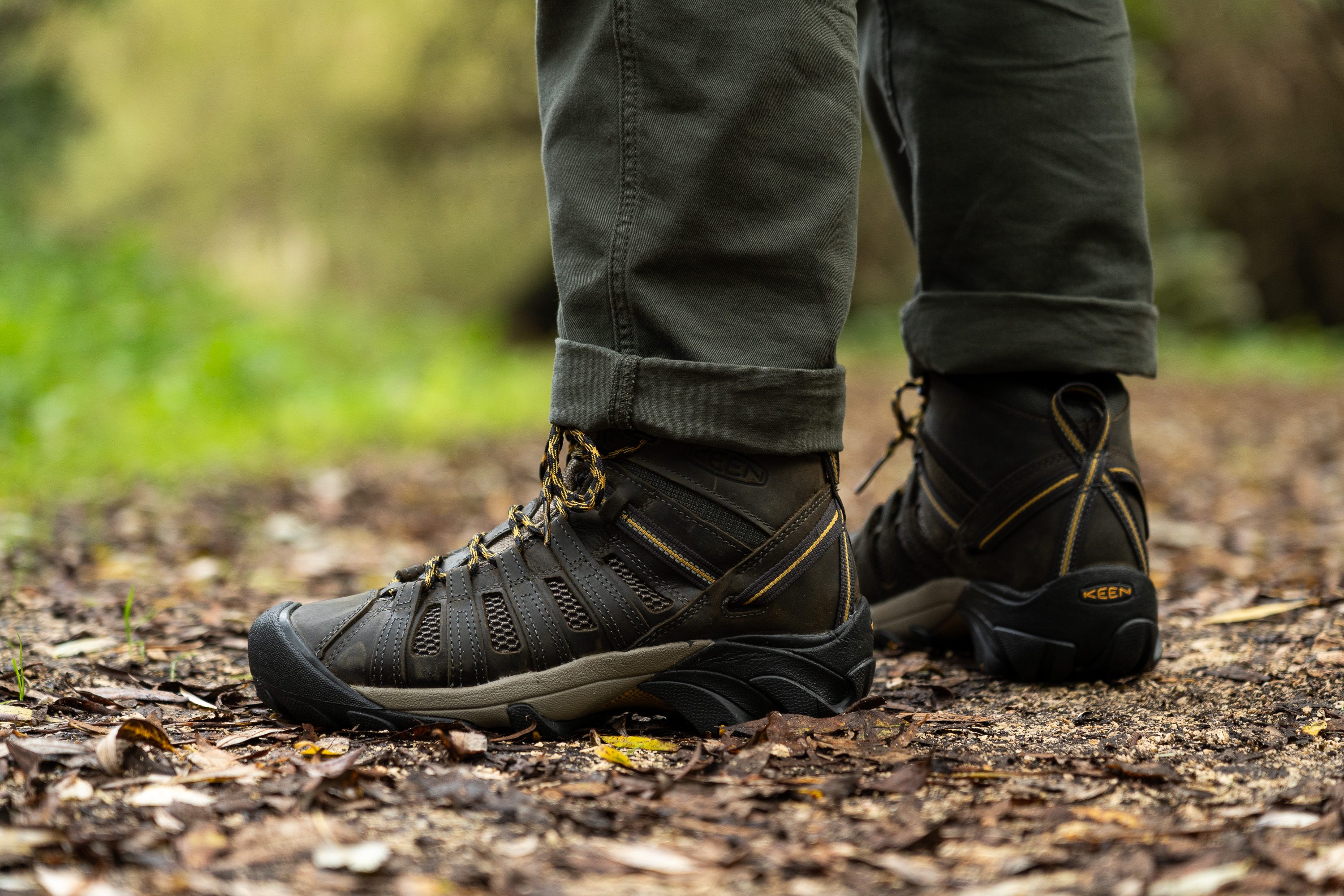
Who should NOT buy
Narrow-footed hikers might find the Voyageur Mid's toebox a little too spacious and will likely bump up against the sidewalls during descents. We recommend checking out the Hoka Kaha 2 GTX or the Timberland Sprint Trekker as more snug-fitting alternatives.
While the Voyageur Mid's outsole performed relatively well in our durability tests, the fact that it began peeling off within our normal testing window raises questions regarding the quality of the boot's construction. The Adidas Terrex Free Hiker 2's outsole boasts extremely high-quality Continental rubber that we found to be extremely durable and dependable.
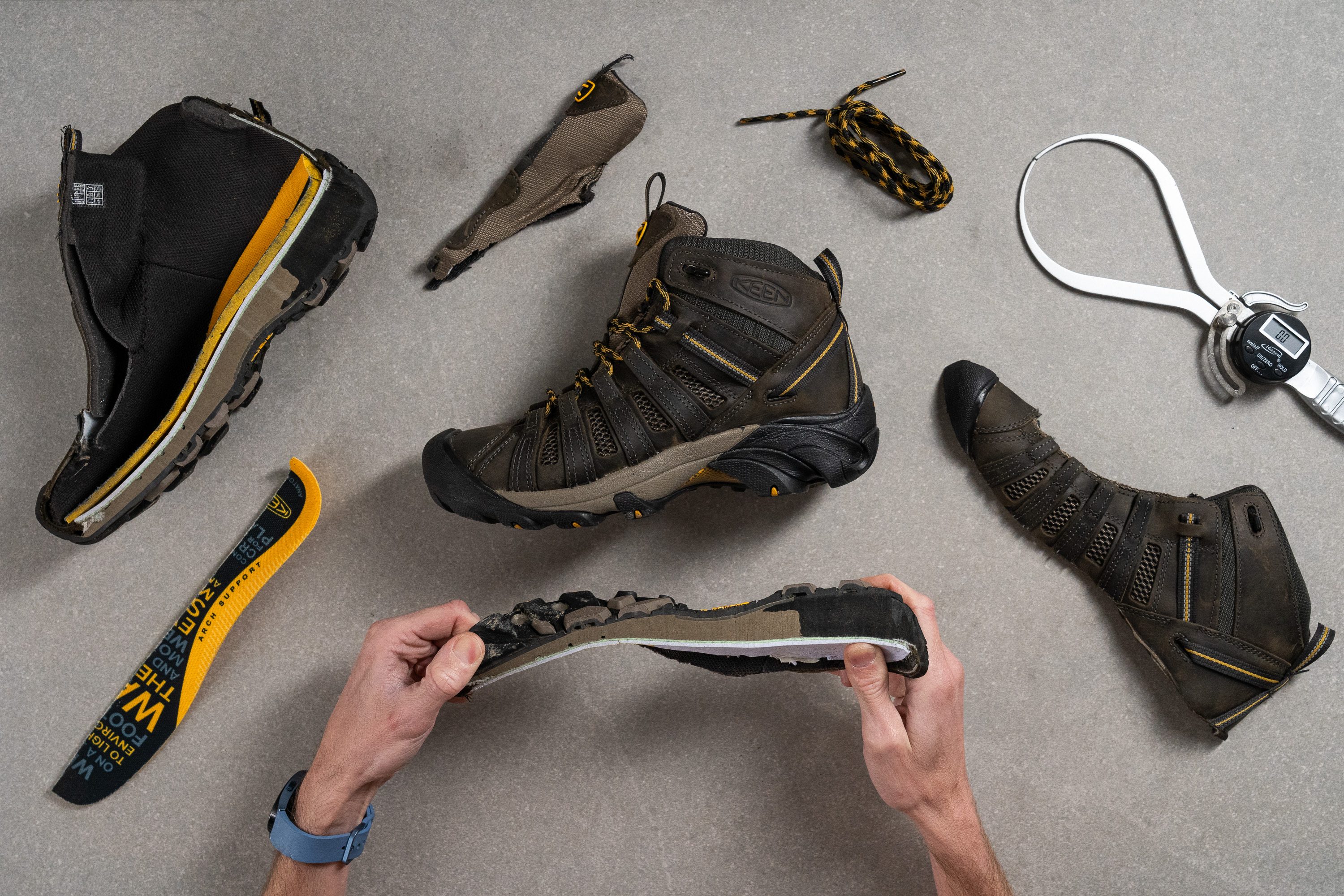
Cushioning
Heel stack
Apart from all the rubber, there's also a generous amount of EVA foam in the Voyageur Mid's midsole. With a stack that measures 46.2 mm thick at the heel according to our calliper, the Voyageur Mid towers above the average hiking boot.
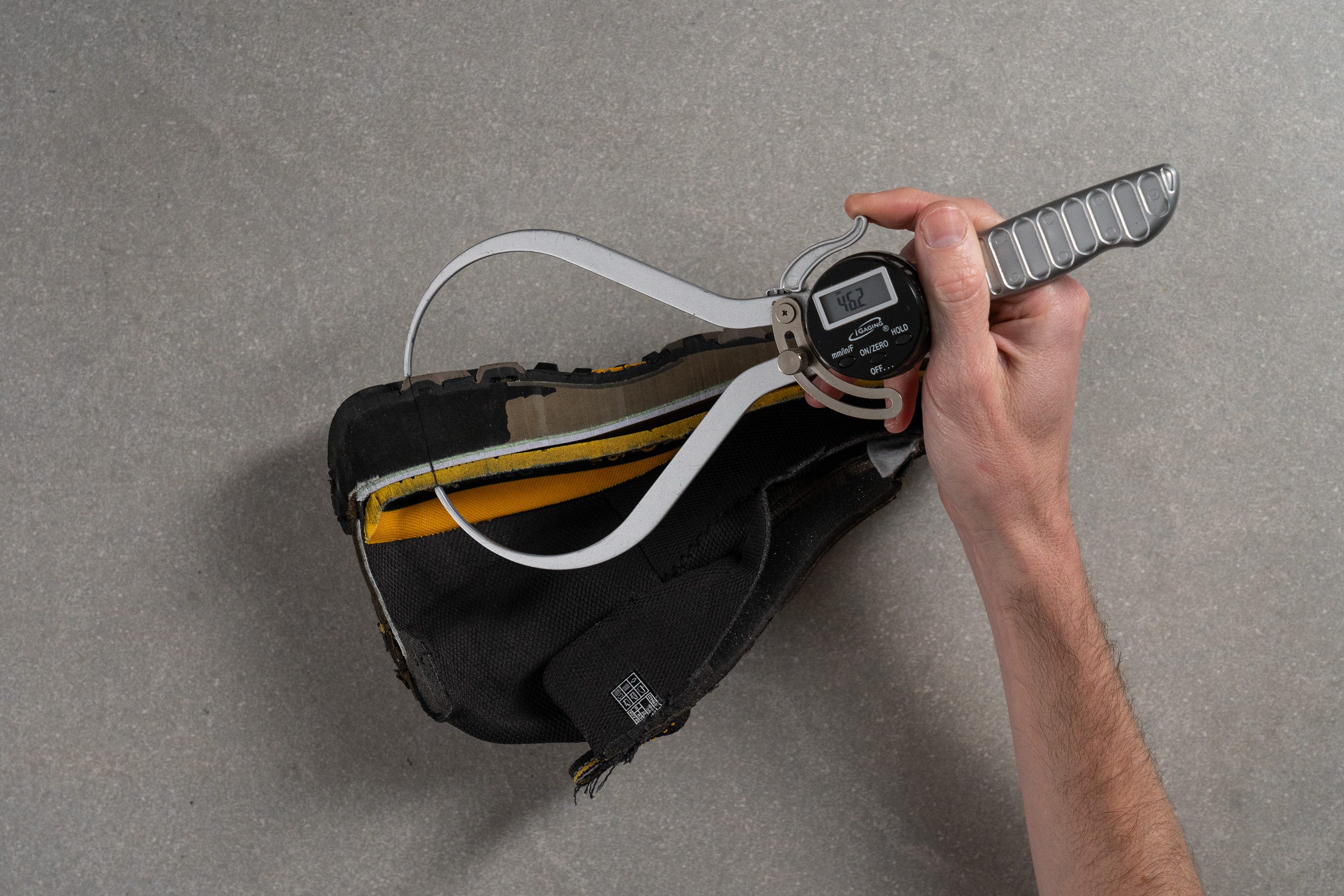
As a result, we enjoyed extremely well-cushioned landings despite the boot's relatively firm midsole foam.
| Voyageur Mid | 46.2 mm |
| Average | 36.3 mm |
Forefoot stack
The Voyageur Mid's stack isn't as drastically high at the forefoot, measuring 25.3 mm thick according to our caliper. This is still more foam underfoot than the average hiking boot has and keeps our foot feeling elevated and protected from impact throughout our stride.
| Voyageur Mid | 25.3 mm |
| Average | 23.0 mm |
Drop
The difference in our stack measurements leaves us with a rather extreme offset of 20.9 mm which is much steeper than our current lab average.
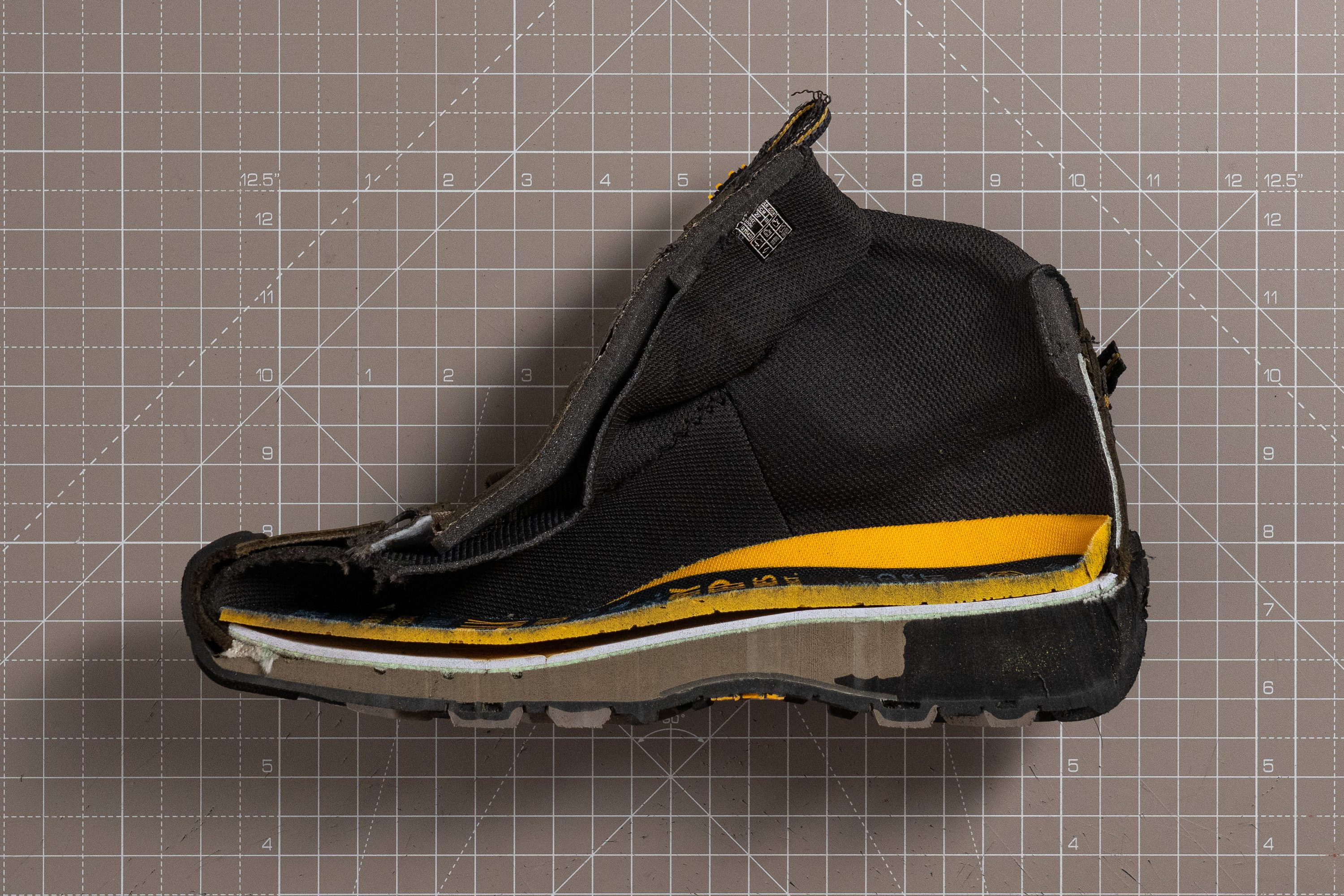
This feels strange and takes some getting used to on harder terrains, but is great when it comes to walking on soft sand where our heels tend to dig into and sink slightly below the surface.
| Voyageur Mid | 20.9 mm |
| Average | 13.3 mm |
Midsole softness
We pressed our durometer against the Voyageur Mid's midsole foam and got a firmer-than-average reading of 29.3 HA.
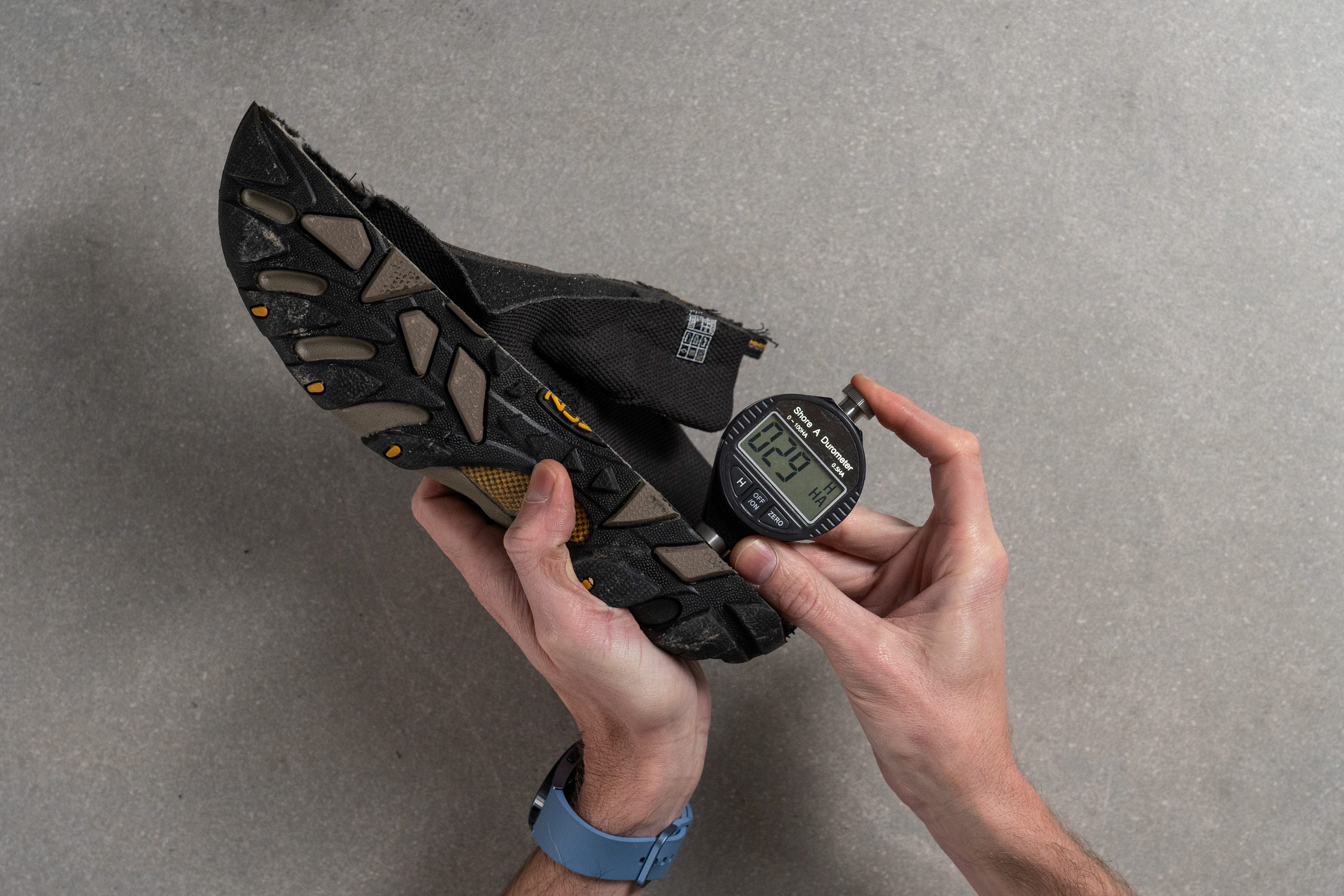
Despite this, we still felt comfy in this boot thanks to the sheer amount of foam underfoot, with the firmness of the midsole actually serving to provide us with added stability when walking on soft sand. This also makes the boot a good option for schlepping a heavy pack over long distances.
| Voyageur Mid | 29.3 HA |
| Average | 28.4 HA |
Size and fit
Size
KEEN Voyageur Mid fits true to size (193 votes).
Width / Fit
We measured the Voyageur Mid's toebox to be 108.7 mm wide at its widest point which is significantly broader than average. This means that the boot will comfortably accommodate wide feet with plenty of room without any fear of hotspots or blisters.
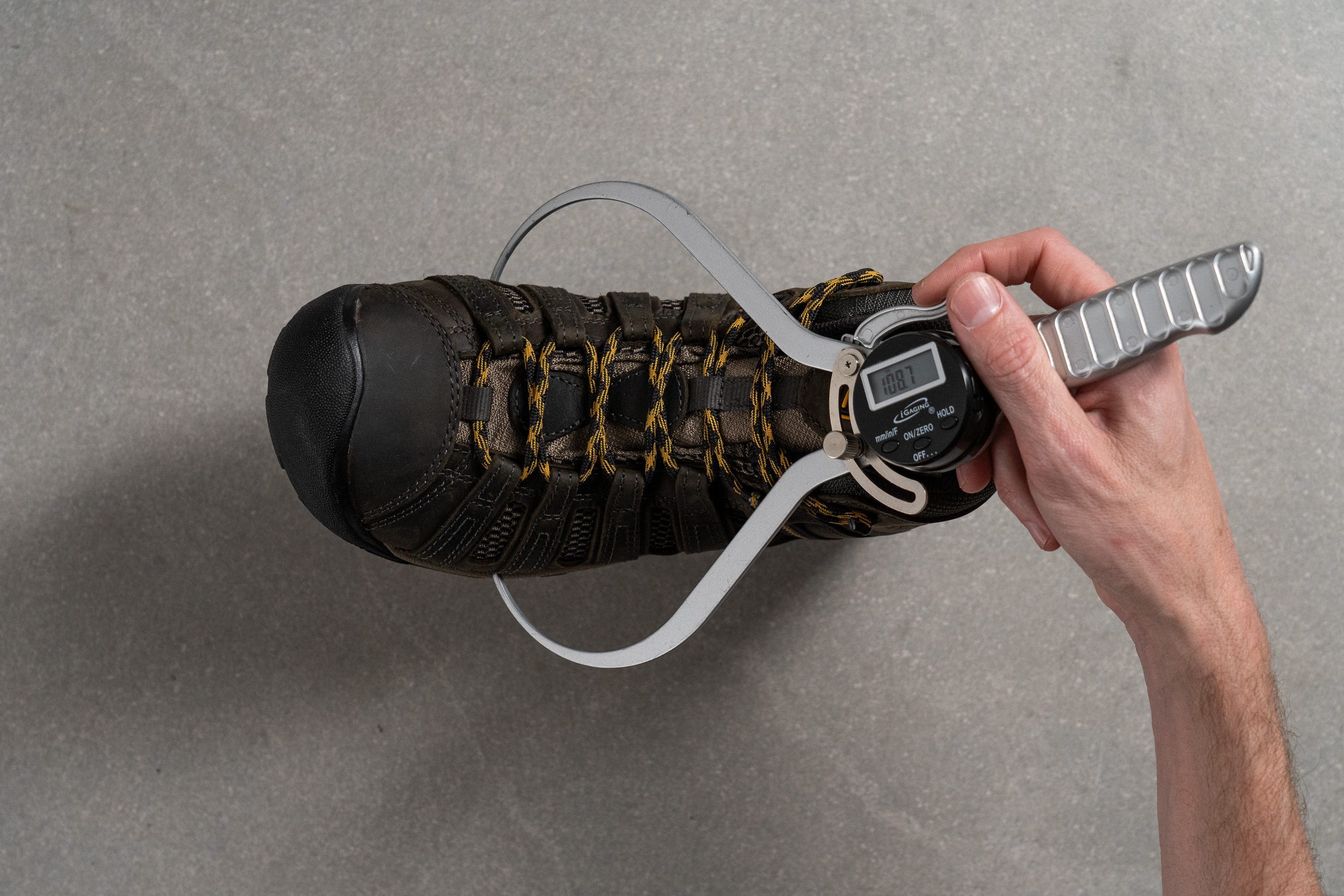
This test follows an older methodology, which is why you don't see recently tested shoes in the chart. Results from different methodologies can not be compared.
| Voyageur Mid | 108.7 mm |
| Average | 102.1 mm |
Toebox width
The Voyageur Mid's toebox tapers down to 88.2 mm wide in the area around the big toe.
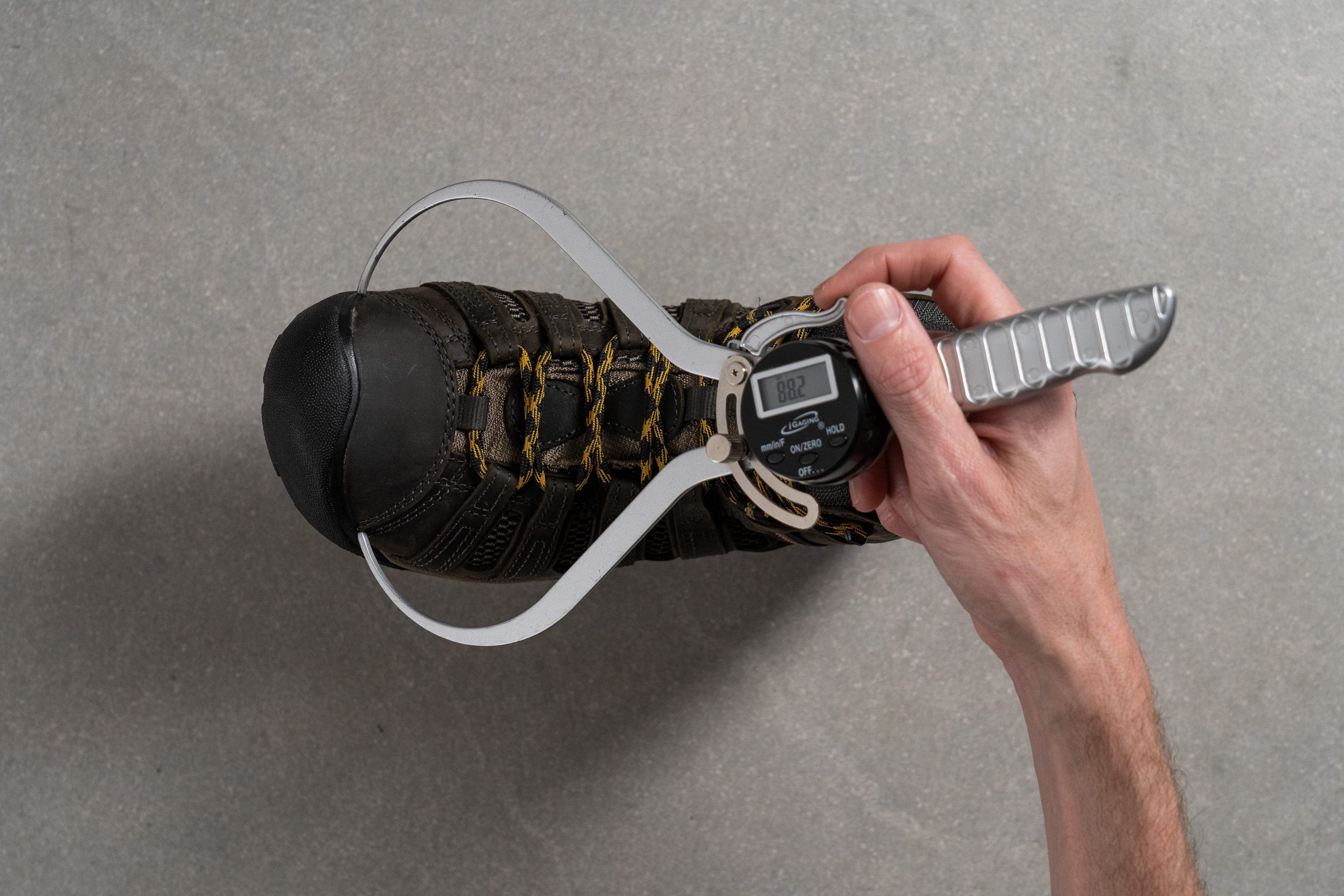
This is also wider than average and gives the boot a very forgiving silhouette that doesn't constrict our toes as we walk.
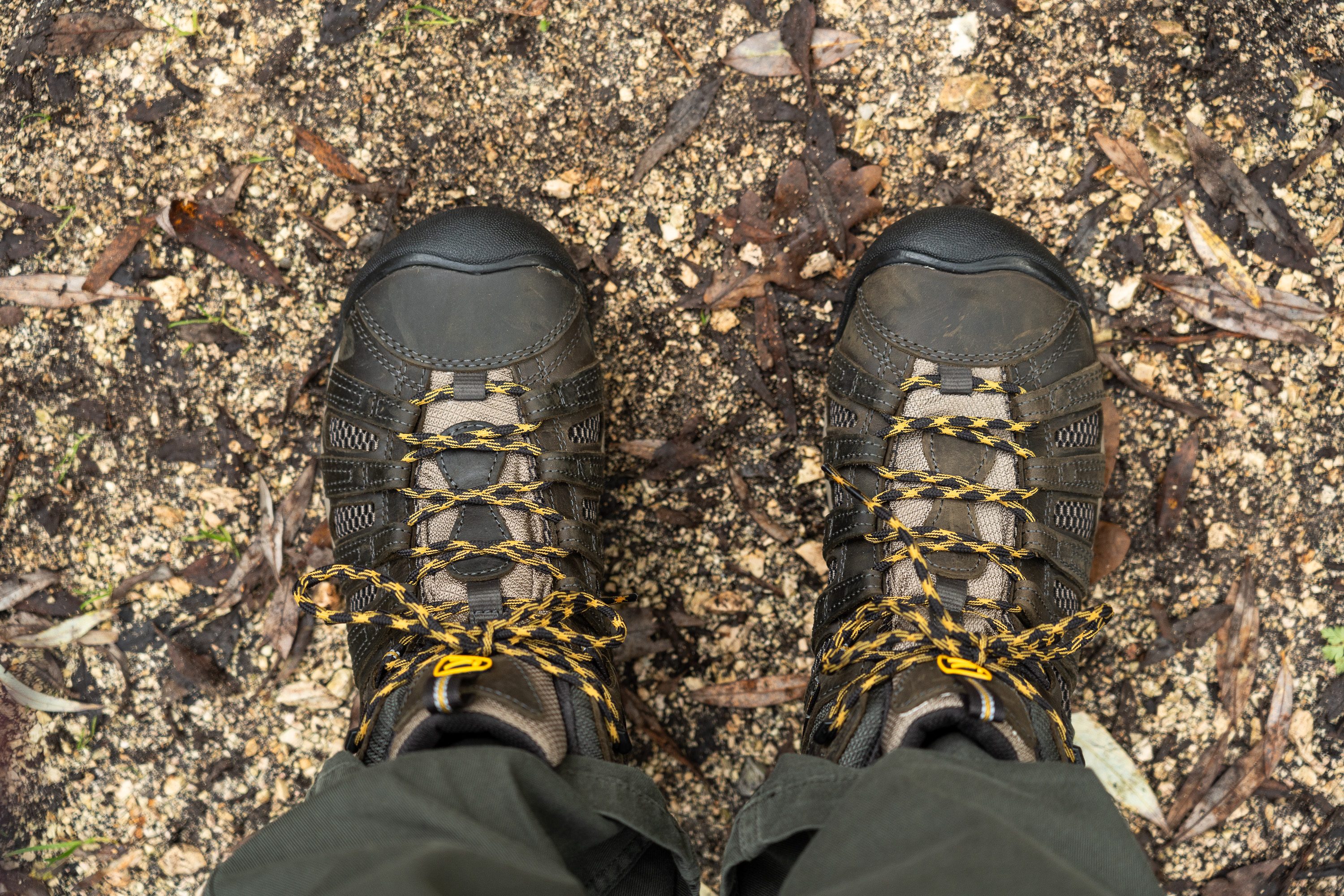
This test follows an older methodology, which is why you don't see recently tested shoes in the chart. Results from different methodologies can not be compared.
| Voyageur Mid | 88.2 mm |
| Average | 78.6 mm |
Traction / Grip
Lug depth
Using our calliper, we measured the Voyageur Mid's outsole lugs to be 4.2 mm thick.

These multi-directional lugs gave us great traction on dirt and gravel trails while the shoe's wide footprint kept us from sinking into the sand during our test hikes.
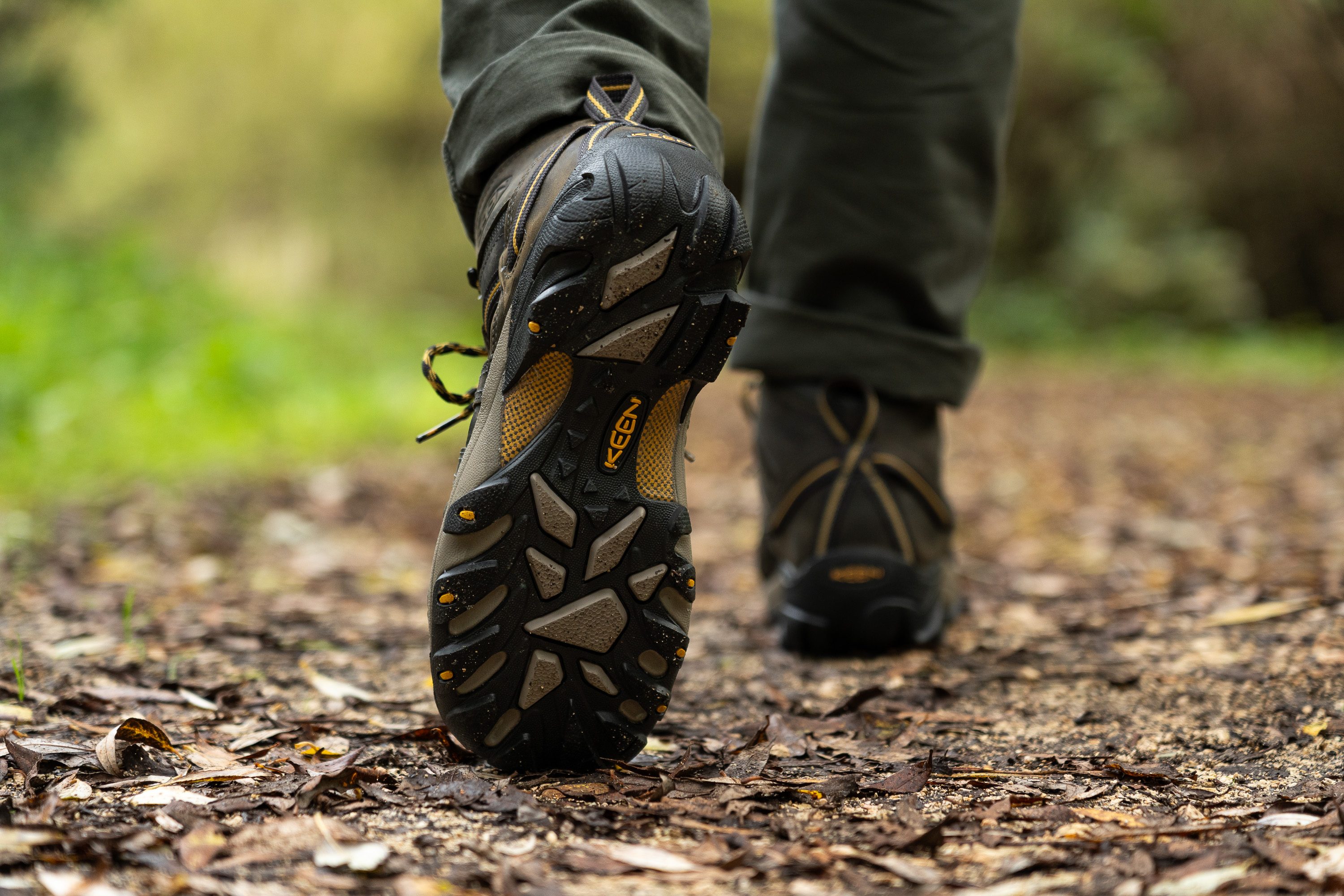
| Voyageur Mid | 4.6 mm |
| Average | 4.3 mm |
Flexibility / Stiffness
We secured the Voyageur Mid to our workbench and found that 37.4N of force is needed to torque the boot to 90 degrees.
This is about the same amount of force needed to bend the average hiking boot to the same point and means that the Voyageur Mid is able to bend along with the natural flexion of our foot with relative ease.
This test follows an older methodology, which is why you don't see recently tested shoes in the chart. Results from different methodologies can not be compared.
| Voyageur Mid | 37.4N |
| Average | 44.3N |
Stiffness in cold (%)
As with our previous freezer test, the Voyageur Mid performed extremely consistently after we chilled it for twenty minutes. Becoming only 5.5% stiffer when faced with frigid conditions makes it much better suited to the cold than the average hiking boot. As such, we would have recommended this boot as a good snow hiker if not for its high score in our breathability test which would turn our feet into ice cubes within the shoe in cold conditions.
| Voyageur Mid | 6% |
| Average | 24% |
Weight
Tipping our scale at 18.4 oz (522g), the Voyageur Mid is slightly heavier than the average hiking boot. However, it didn't feel too cumbersome during our test hikes, even when pushing the mileage with ascents and descents on more grueling trails. Conversely, this heft does further add to the shoe's impenetrable and tank-like vibe that had us cruising with confidence as we tested the boot.
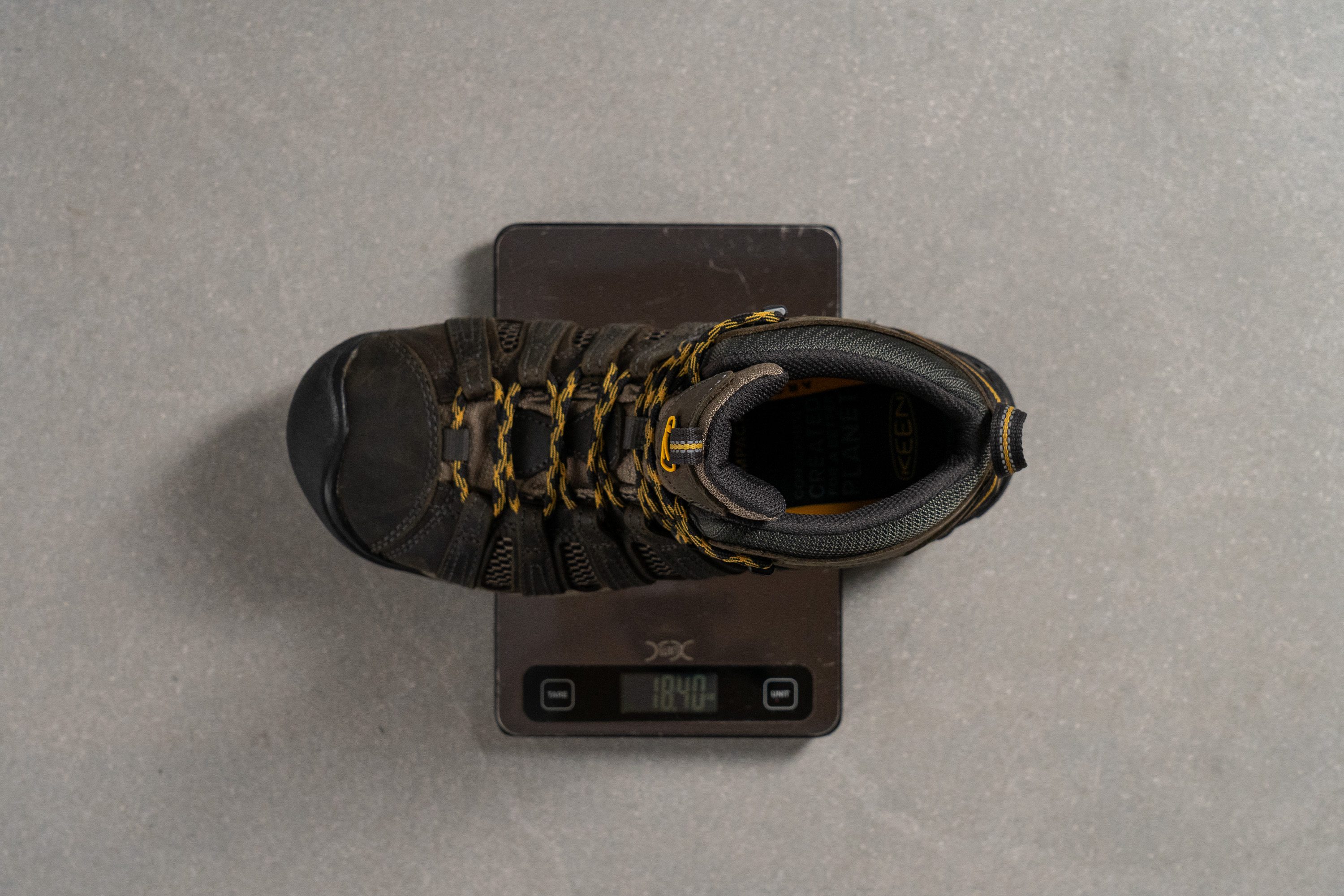
| Voyageur Mid | 18.4 oz (522g) |
| Average | 18.7 oz (531g) |
Breathability
We pumped smoke into the boot to test how breathable it is and, as the footage demonstrates, it filters through the upper with relative ease. This above-average performance earns the Voyageur Mid a 4 out of 5, making it just shy of the perfect score we'd want from a desert-focused boot. This in combination with the use of moisture-wicking materials means that the boot not only dries up quickly but also prevents our feet from getting too sweaty or stinky.
This is still more ventilated than what we'd expect from a shoe that features so much leather in its upper. As we can see from inspecting a cross-section of the upper, these portions of the boot block any light from shining through.
The key to the Voyageur Mid's airflow is clearly the mesh portions of the upper which act as the boot's ventilation ports.
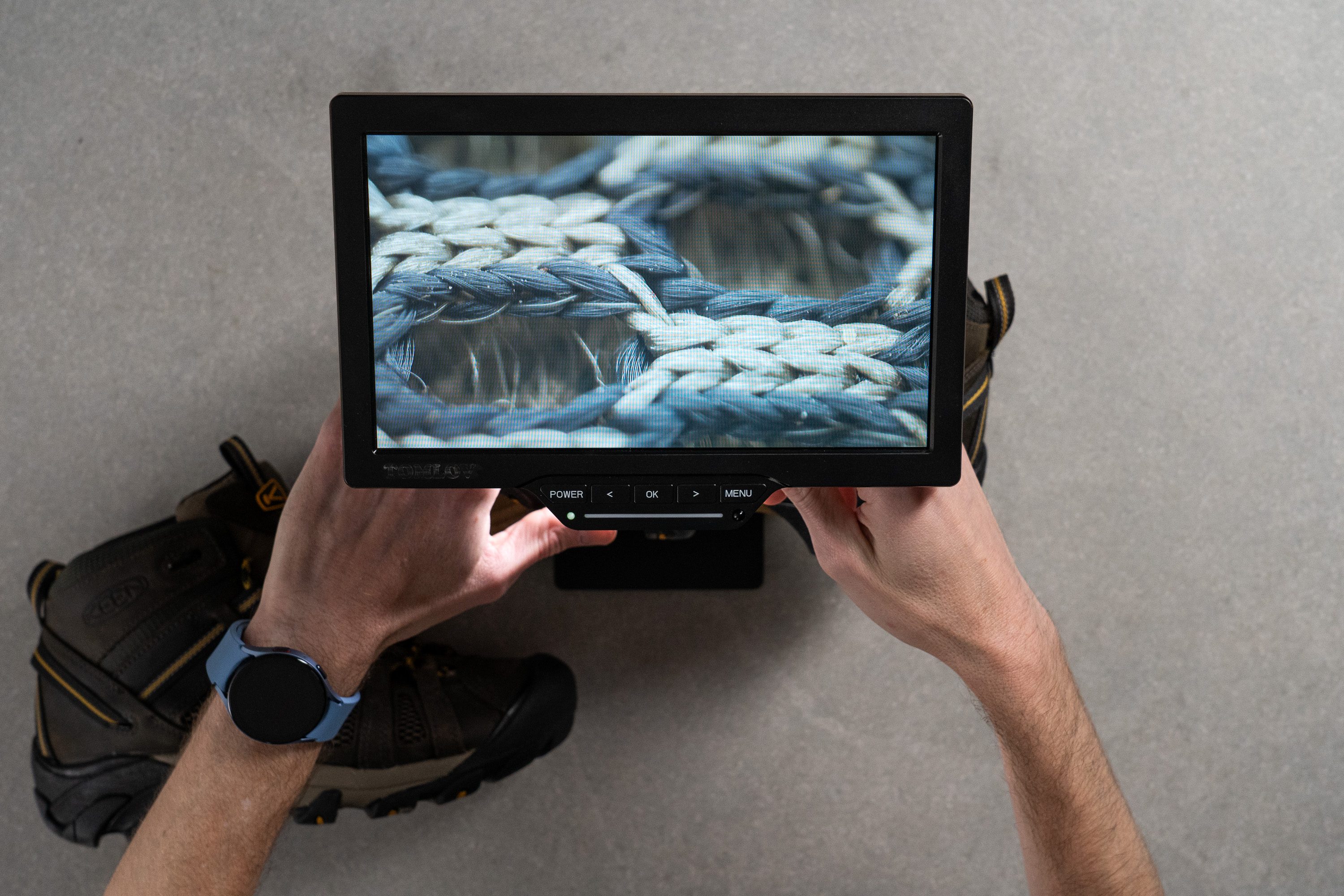
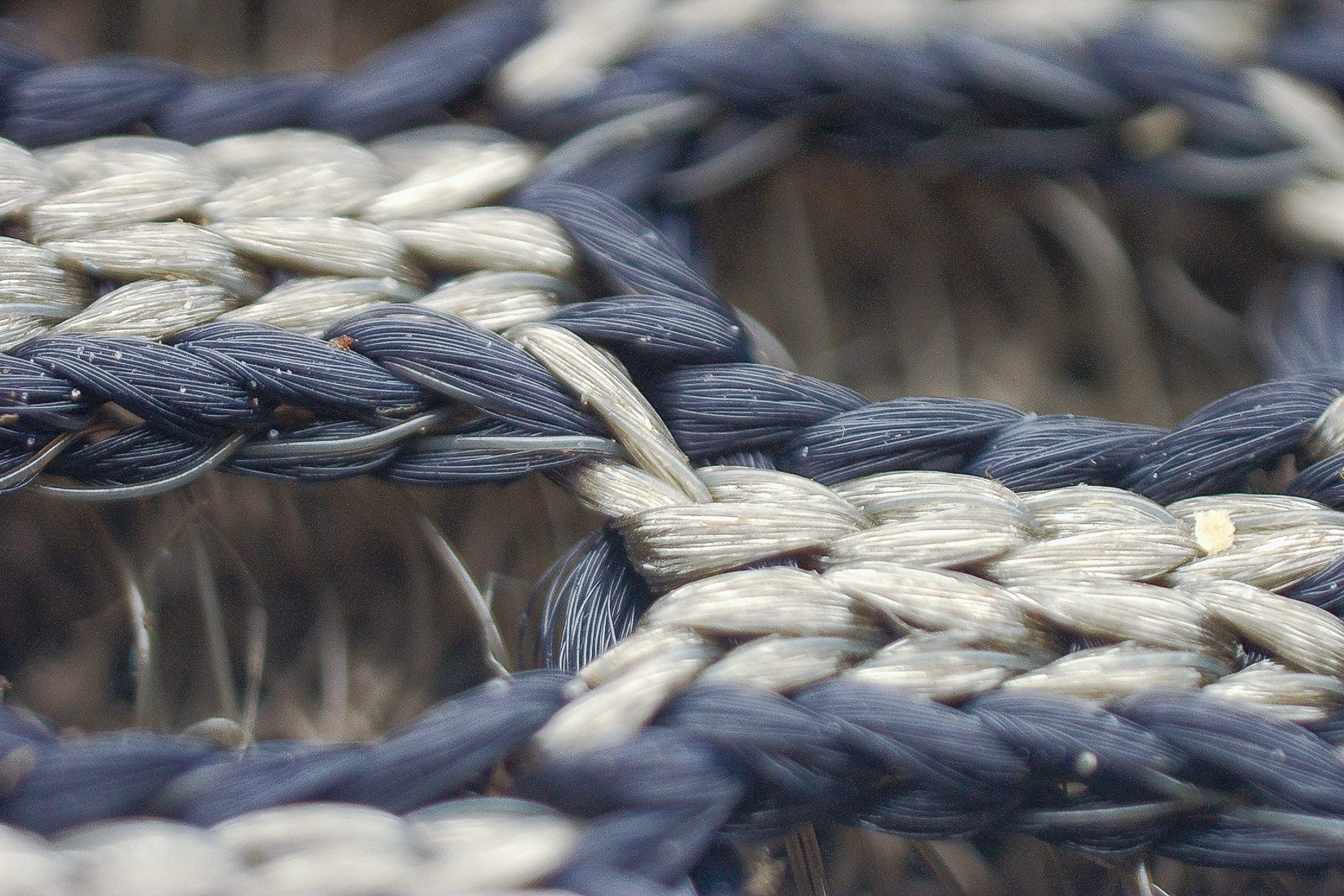
| Voyageur Mid | 4 |
| Average | 1.3 |
Stability
Lateral stability test
In spite of the boot's massive stack, the Voyageur Mid feels remarkably stable underfoot. This is no doubt a result of the firm midsole in combination with a number of factors we'll explore below.
Torsional rigidity
Unsurprisingly for a boot that boasts so much foam and rubber, the Voyageur Mid is quite difficult to bend and twist in our hands, leading us to give it a firmer-than-average torsional rigidity score of 4 out of 5. This prevents the boot from contorting laterally as we walk and maintains a steady and level base that promotes excellent stability even on soft and uneven terrains.
| Voyageur Mid | 4 |
| Average | 4.4 |
Heel counter stiffness
The Voyageur Mid's heel counter is moderately stiff, earning a 3 out of 5 on our subjective scale after our manual assessment. This level of flexibility at the heel allows the boot to hold our foot in place relatively securely but without putting too mich pressure on our ankles or tendons.
| Voyageur Mid | 3 |
| Average | 3.6 |
Midsole width - forefoot
The Voyageur Mid's midsole is 113 mm wide at the forefoot, making it on par with our current lab average. This gives us more than enough platform underfoot to promote a stable stride.
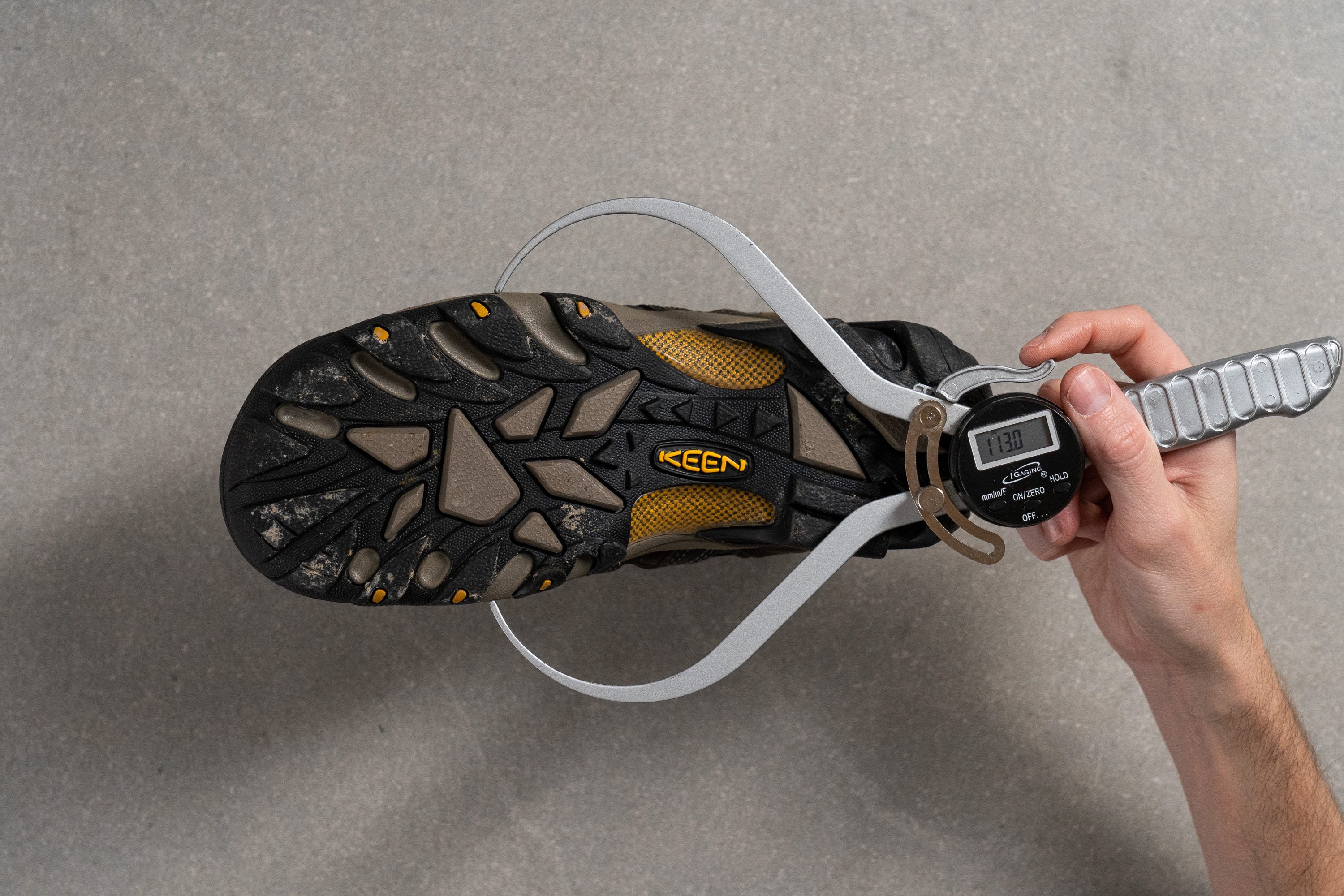
| Voyageur Mid | 113.0 mm |
| Average | 111.5 mm |
Midsole width - heel
The midsole also falls in line with our current lab average at the heel, measuring 91.8 mm wide according to our caliper.
| Voyageur Mid | 91.8 mm |
| Average | 87.6 mm |
Durability
Toebox durability
The Voyageur's leather toebox is protected by a rubberized toe bumper that proved to be a worthy adversary to our Dremel in our durability test.
After 12 seconds of grinding, our tool was only able to smooth out the bumper's speckled pattern at the point of contact, leading us to give the Voyageur mid a perfect toebox durability score of 5 out of 5. We really did feel tank-like as we marauded the trails without any concern of stubbing a toe or damaging the boot.
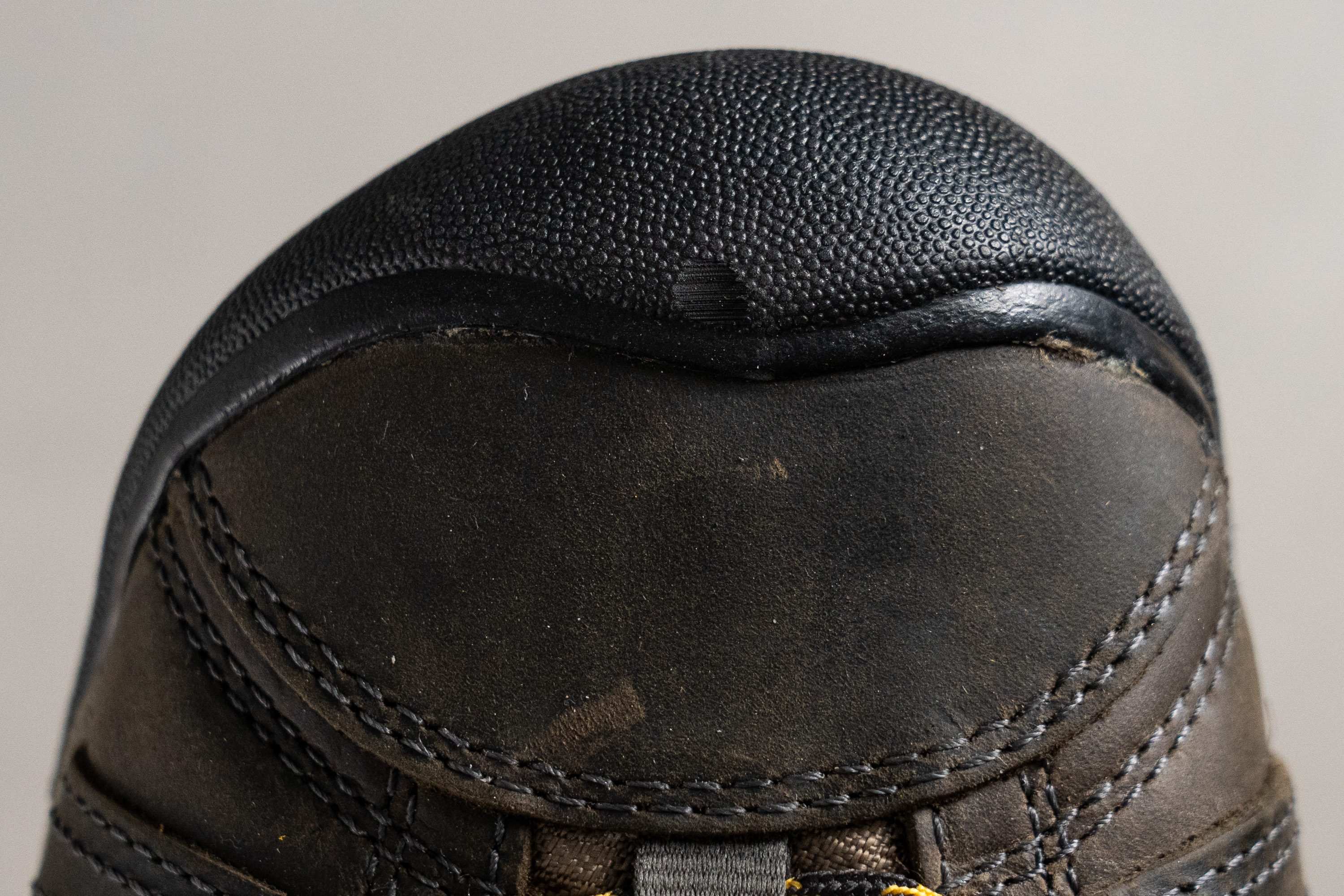
| Voyageur Mid | 5 |
| Average | 4.3 |
Heel padding durability
Next, we turn our attention to the Voyageur Mid's heel collar and set our Dremel against it with 3.2N of force for four seconds of grinding punishment.
Our tool managed to pierce the Voyageur Mid's lining during the test and eat away at some of the soft padding within. However, with how generously padded the boot is in the heel collar, the Voyageur Mid still earns a respectable 3 out of 5 for heel padding durability.
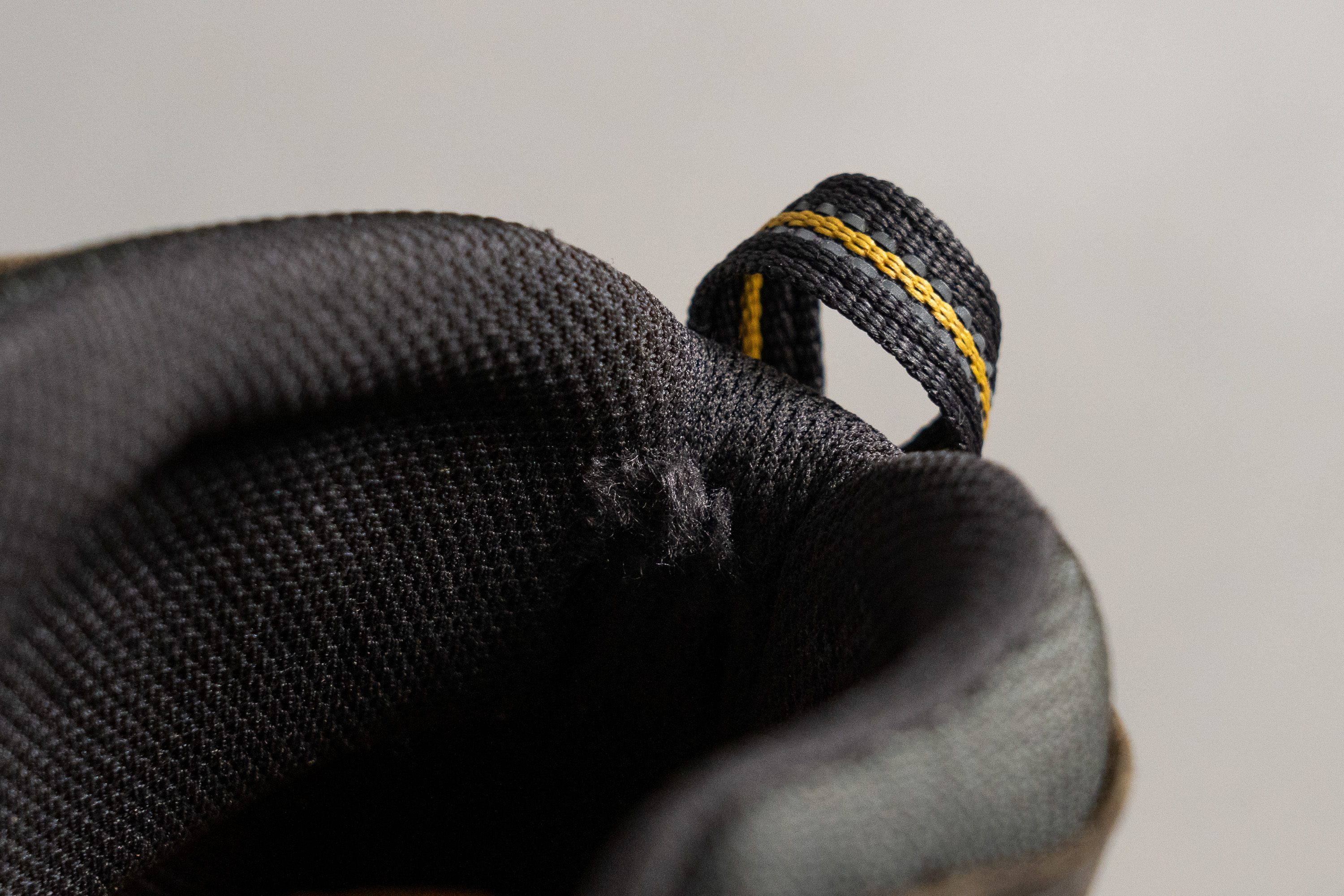
| Voyageur Mid | 3 |
| Average | 3.6 |
Outsole hardness
We pressed our durometer against the Voyageur Mid's outsole and got an average reading of 87.3 HC.
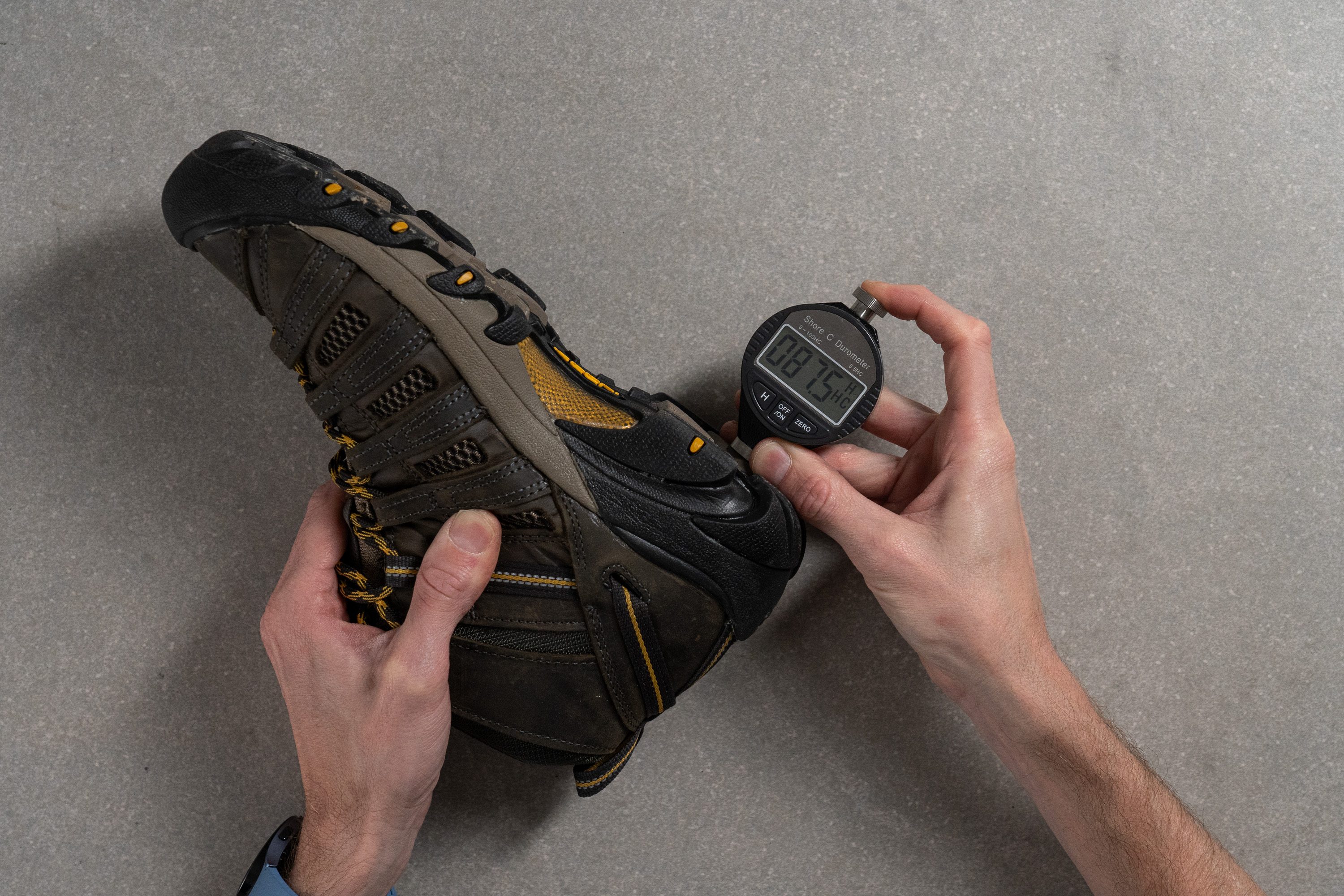
| Voyageur Mid | 87.3 HC |
| Average | 87.1 HC |
Outsole durability
For the final appearance of our Dremel, we fired it up to 10K RPM this time and set it against one of the Voyageur Mid's outsole lugs.
After grinding away for twenty-two seconds, we used a tyre tread gauge and found that we had shorn off 0.6 mm of material from the Voyageur Mid's outsole. This is right around average for a hiking boot and, with over 9 mm of rubber to wear through underfoot, this gives us no cause for concern regarding the longevity of the outsole. However, the poor construction quality might be more of a problem as we noticed the sole start to peel away from the shoe after only a handful of tests.
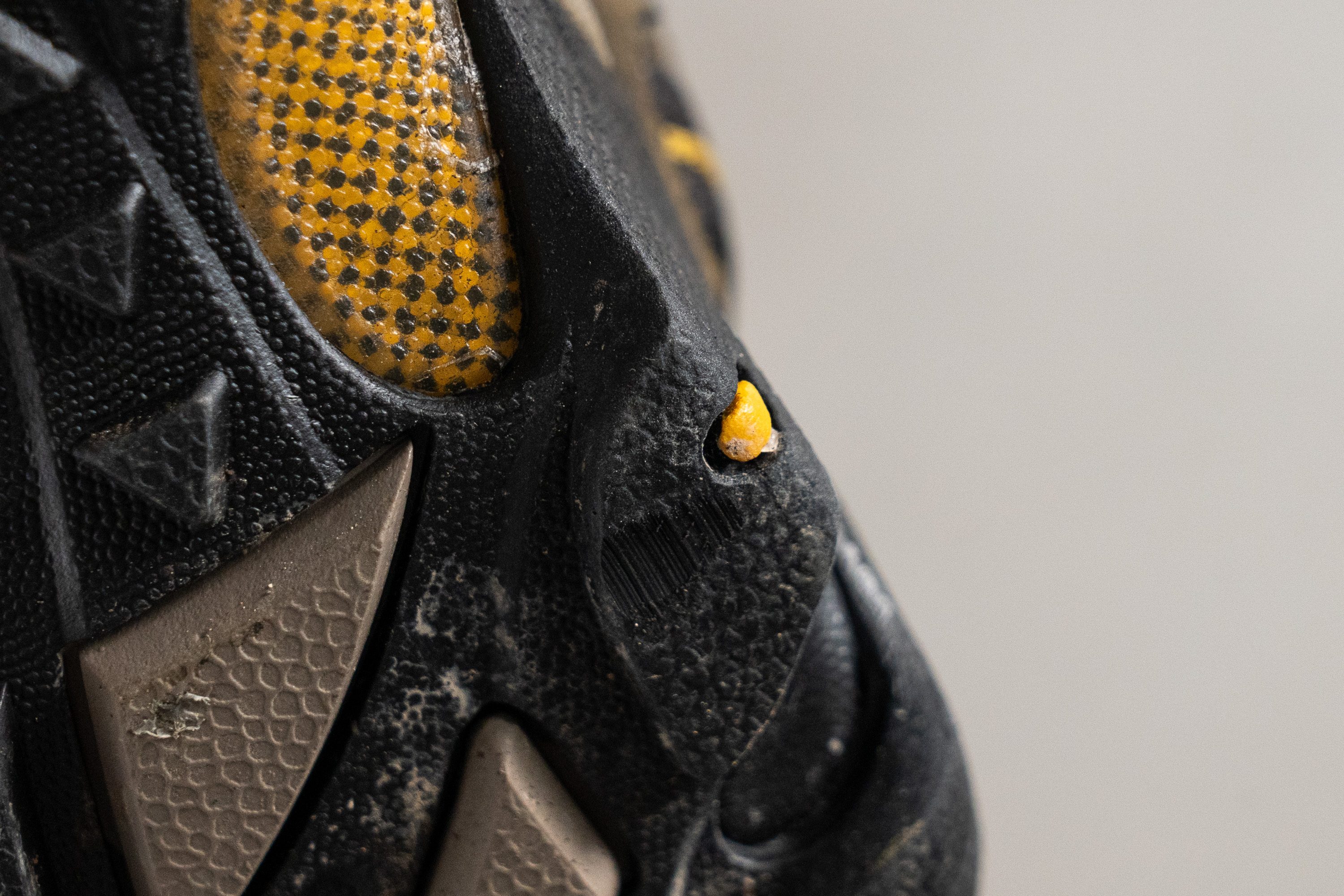
| Voyageur Mid | 0.6 mm |
| Average | 0.8 mm |
Outsole thickness
The Voyageur Mid's outsole is thicker than average at 5 mm thick according to our caliper measurements. This gives us a nice and chunky base that elevates us from any hazards below and adds to the reinforced and protected feeling we enjoyed while testing this boot.
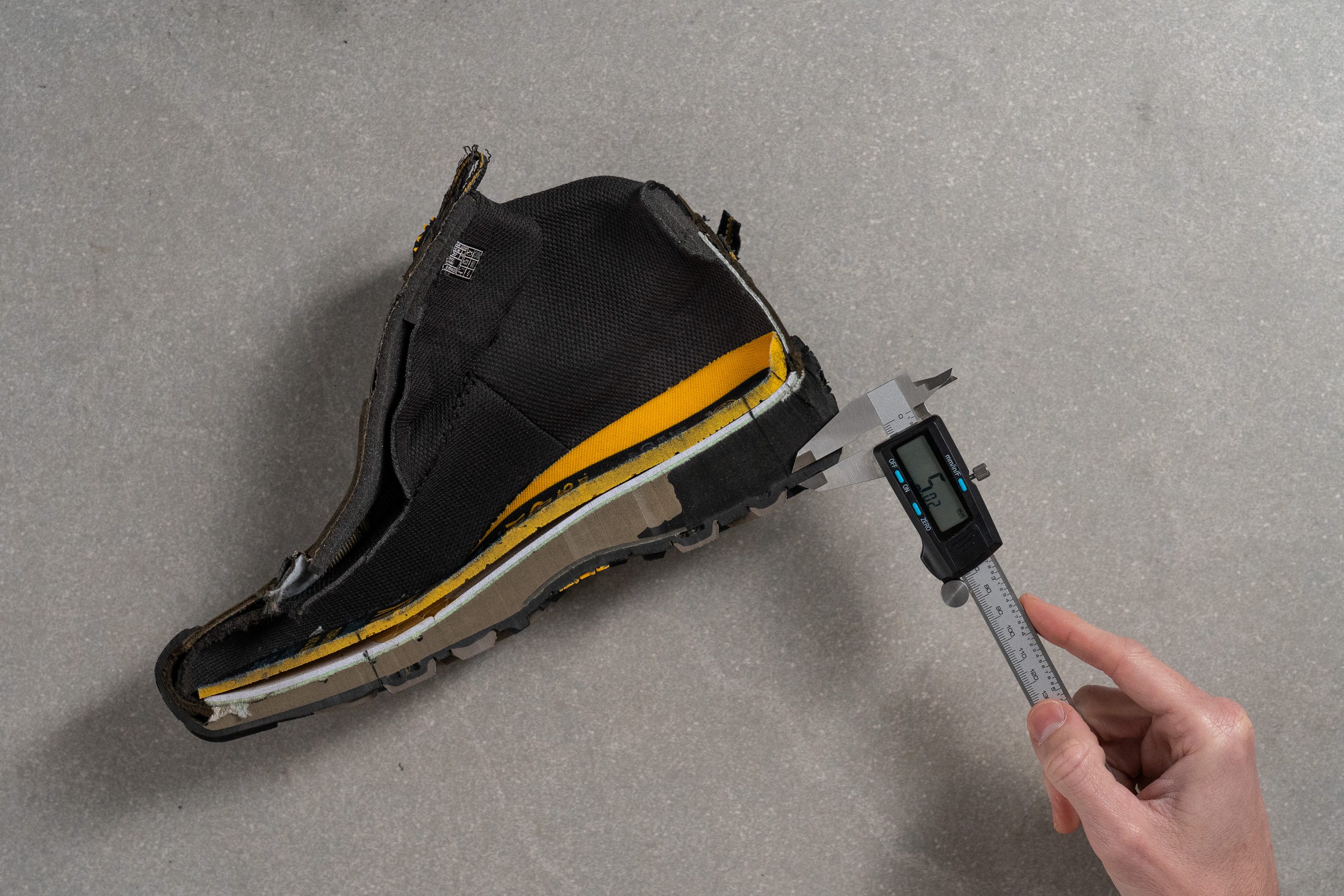
| Voyageur Mid | 5.0 mm |
| Average | 2.9 mm |
Misc
Insole thickness
The Voyageur Mid's insole falls within the average range at 5.8 mm thick according to our caliper measurements.
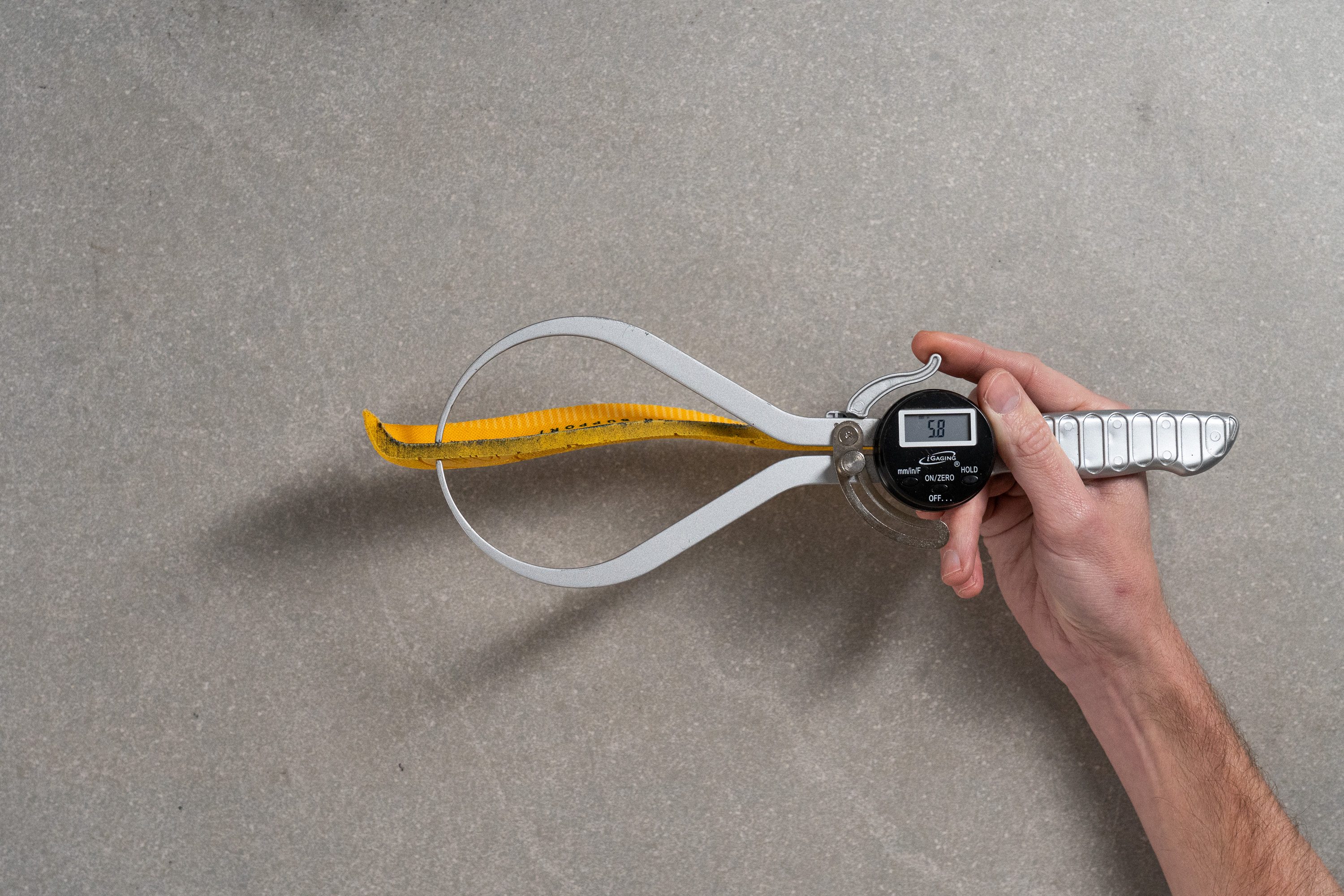
| Voyageur Mid | 5.8 mm |
| Average | 6.0 mm |
Removable insole
The Voyageur Mid's chunky insole isn't glued in, so replacing it with a custom orthotic is possible if necessary.
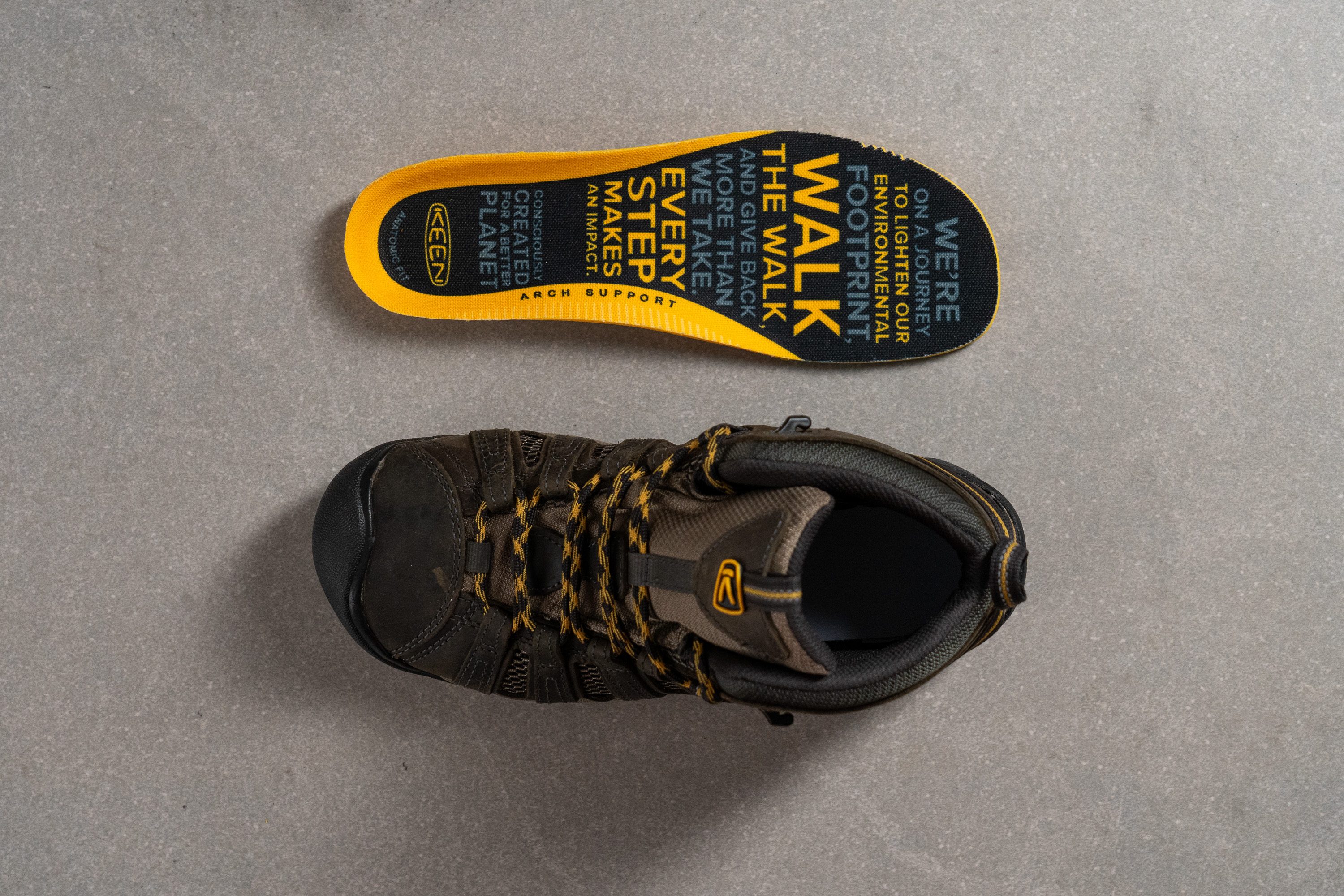
| Voyageur Mid | Yes |
Midsole softness in cold

Midsole softness in cold (%)
Despite being marketed as a desert boot, the Voyageur Mid's midsole performs surprisingly well in our freezer test. It only becomes 9.8% firmer with a durometer reading of 32.1 HA. This is still rather stiff, but won't feel too different from how it does at room temperature. Deserts can get very cold at night, so it's good to know that the boot will remain quite forgiving regardless of how harsh the surroundings may be.
| Voyageur Mid | 10% |
| Average | 20% |
Reflective elements
With lines of reflective elements intersecting to form a large X at the rear of the boot, as well as dotting the finger loop, the Voyageur Mid certainly does have the safety of nocturnal adventurers in mind.
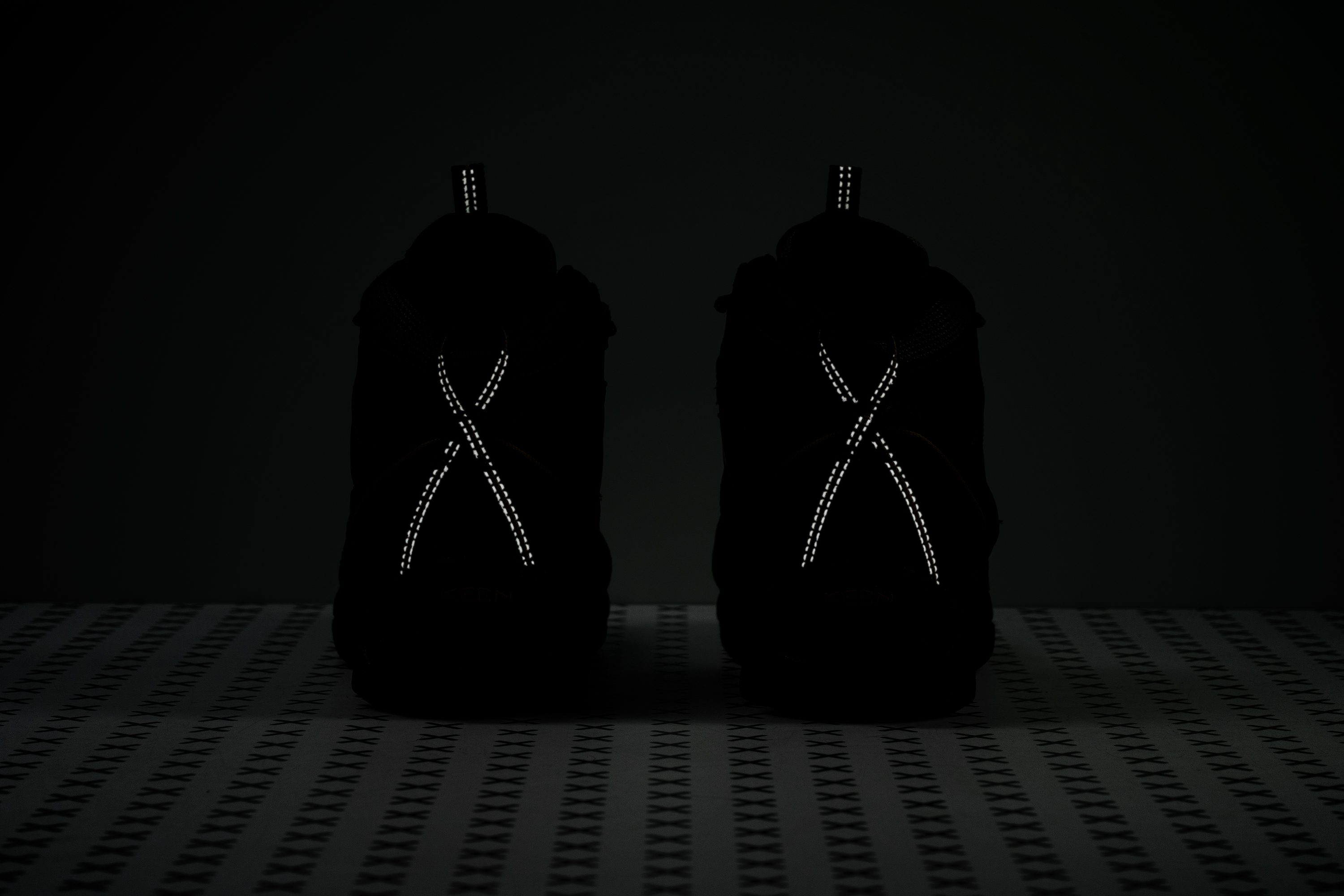
| Voyageur Mid | Yes |
Tongue padding
At 12.1 mm thick according to our calliper measurements, the Voyageur Mid's tongue is ever-so-slightly thicker than our current lab average.
| Voyageur Mid | 12.1 mm |
| Average | 11.2 mm |
Tongue: gusset type
The Voyageur Mid's tongue is fully gusseted on both sides which helps in providing a secure midfoot lockdown while also preventing debris from entering the boot.
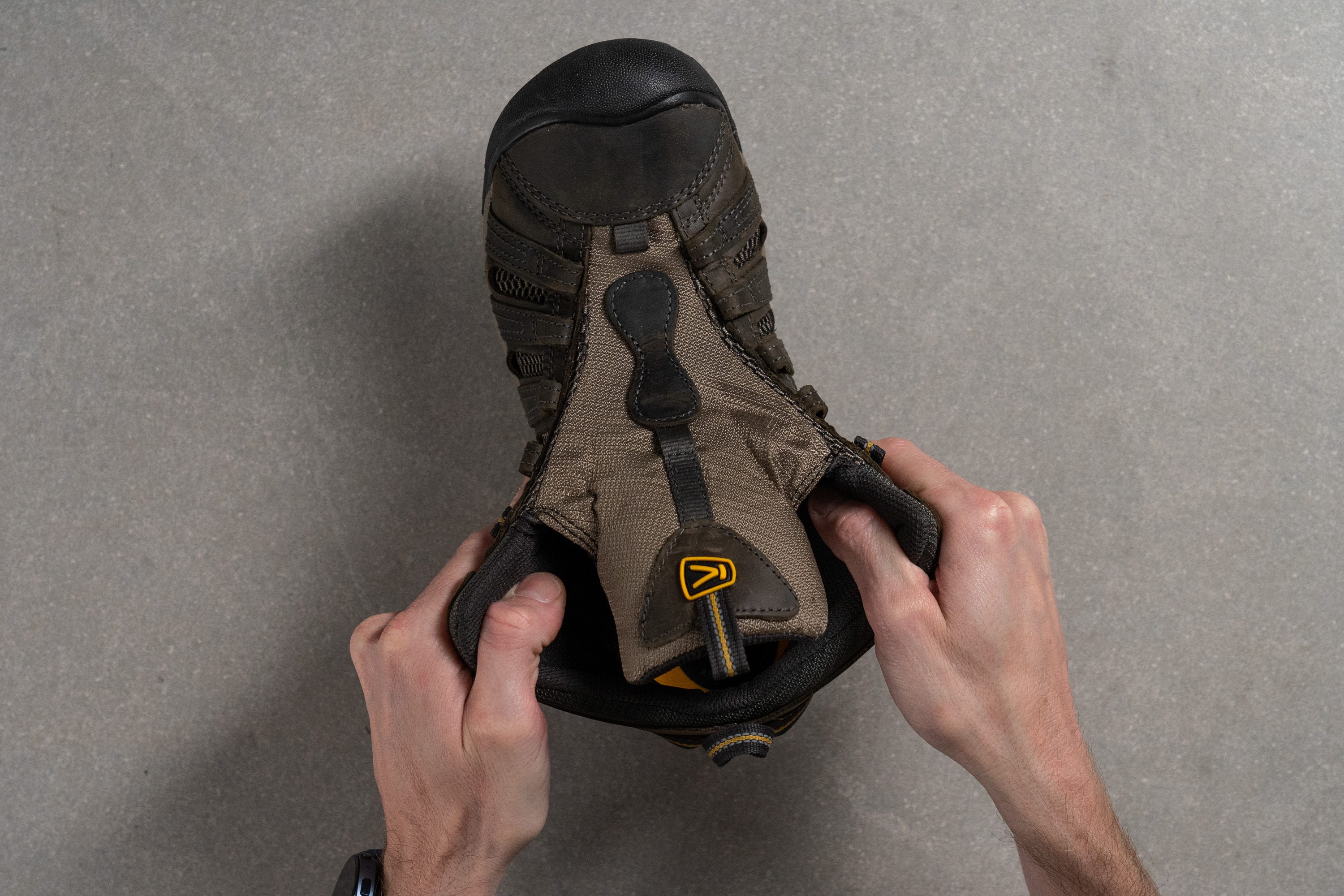
| Voyageur Mid | Both sides (full) |
Heel tab
Not only does the Voyageur Mid have a little finger loop at the heel, but it also has one at the top of the tongue. These make sliding into the relatively snug boot a little faster and easier.
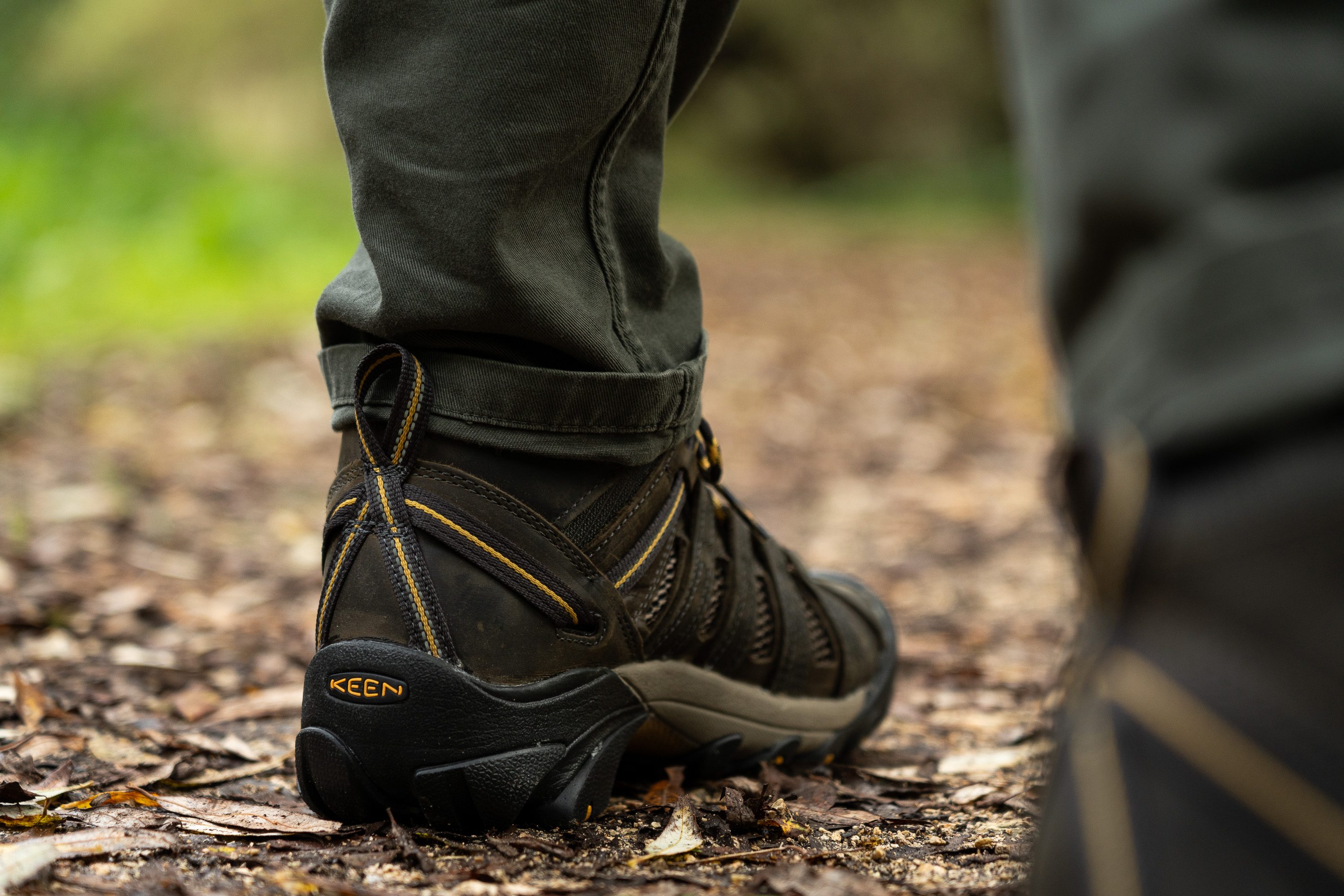

| Voyageur Mid | Finger loop |

